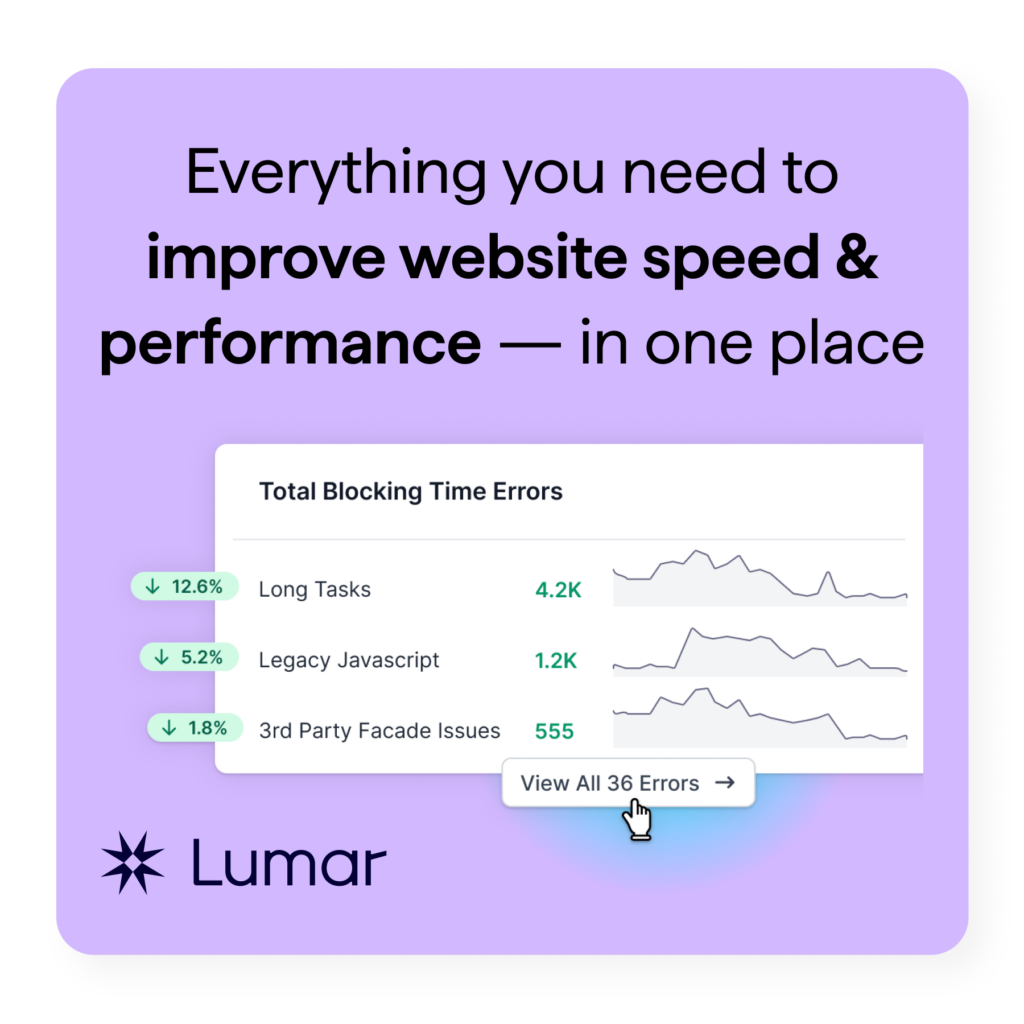We know that Google cares about website speed enough to factor it into its search ranking algorithm (in the form of Core Web Vitals), but just how much of a priority should site speed be for website teams today?
Does site speed impact search engine rankings?
In short, yes.
Google first confirmed that site speed is a ranking factor over a decade ago! Back in 2010, the company wrote on its Google Search Central blog:
“You may have heard that here at Google we’re obsessed with speed, in our products and on the web. As part of that effort, today we’re including a new signal in our search ranking algorithms: site speed. Site speed reflects how quickly a website responds to web requests.
Speeding up websites is important—not just to site owners, but to all Internet users. Faster sites create happy users and we’ve seen in our internal studies that when a site responds slowly, visitors spend less time there.”
Then, years later in 2018, Google rolled out the “Speed Update” to mobile search results.
By 2021, Google had expanded its site speed and user experience ranking factors to include what it calls “Core Web Vitals” — a set of metrics that signal good user experience to Google.
Today, all sites indexed by Google are reviewed mobile-first — and site speed remains an aspect of the search engine’s ranking algorithm.
What is site speed?
‘Site speed’ and ‘page speed’ are umbrella terms used to describe how quickly a web page takes to become fully functional for its users. For this to happen, content must be fully loaded into the initial viewport, and any interactive elements (such as links, buttons, or tabs) should respond to user interactions quickly and as expected.
How does Google measure site speed?
There’s no single metric that determines site speed. Your average user may describe a web page as fast or slow, but there could be any number of factors feeding into this experience. Search engines like Google will look at a variety of signals to analyze a page’s overall speed and performance.
Some metrics that measure varying aspects of site speed include Google’s Core Web Vitals metrics and related data such as:
- Largest Contentful Paint (LCP): This metric measures loading performance by calculating the amount of time it takes for the largest on-page element to load into the viewport. The LCP element can therefore change depending on the template used and the content of each page.
- Cumulative Layout Shift (CLS): Ever tried clicking a link on a newly opened webpage, only for elements of the content to jump further down the screen moments later? Movements like this are measured as part of a page’s CLS score and reflect the importance of maintaining visual stability as elements continue to load both inside and outside of the initial viewport.
- Interaction to Next Paint (INP): A page that looks good at first glance will only go so far; any interactive elements need to be responsive to a user’s requests before a page can be considered fully functional. INP measures the latency of all interactions on a page throughout its lifespan and reports on the longest duration that’s found (ignoring any outliers). (Note: INP replaced Google’s previous “FID” metric for interactivity speed in March 2024.)
Looking beyond Core Web Vitals
Site speed and search engines
We know that Core Web Vitals are a direct ranking factor in Google search, but poor load times can also have an indirect impact on search rankings and visibility. Modern-day search engine ranking systems are designed to reward sites that provide a positive user experience. Ensuring your site’s loading performance is as fast and frictionless as possible can therefore have huge benefits, even when dealing with site speed metrics that aren’t directly included in the Core Web Vitals set.
Slow-loading pages can also cause search engines big headaches when it comes to crawl efficiency. In fact, Google lists improving page load times as one of the most effective ways to optimize crawl speed and frequency across a domain. With limited crawl resources to go around, slow-loading pages may result in important content on your site getting crawled less frequently.
Site speed and conversion rates
The benefits of a fast and responsive website reach far beyond search engine rankings. Speed has been shown to have a real impact on the way users interact with a site. A 2022 study by Portent calculated that B2C e-commerce websites with pages that load in less than a second convert 2.5x more than sites with an average 5-second load speed. For B2B sites, this raises to 3x more conversions over the same time period.
A slow-loading web page is also one of the most reliable ways to increase the bounce rate on your site. Data from Statista’s research department shows a steady increase in the percentage of users that will leave a website for every second of additional page load time — and rising significantly around the 5-second mark.
Fail to provide a positive user experience and you run the risk of driving users directly towards your competition.
Site speed in a mobile-first world
14 years after Google first confirmed site speed as a ranking factor, the web is undoubtedly a very different place than it was at the time. For one, there’s been a switch to mobile-first indexing; a consequence of most users now searching on handheld devices. Data from Semrush estimates mobile visits exceeded desktop visits to the US’s top 100 websites by 313% in 2023. However, desktop traffic had a higher visit duration and lower bounce rates.
Despite mobile usage far exceeding desktop these days, it’s still the case that, on average, mobile webpages take an estimated 70.9% longer to load than on desktop. It’s a clear indication that many sites still aren’t paying close enough attention to site speed or the user experience they’re delivering to their biggest audience.
So, how much does site speed matter for SEO in 2025?
Despite all of the above, Google openly admits that pages with sub-par user experience metrics can still rank well if their content is the most helpful and relevant to a user’s query. So, why bother with site speed at all if great content is enough to maintain strong rankings?
The problem with that thinking is simple. Now more than ever, there are often many great pieces of content on the web to match any given search query. The days of talking about competitive vs. noncompetitive markets in SEO are over because practically every market is competitive.
When search engines are forced to choose between several pieces of high-quality content, user experience metrics — like site speed — form a part of the evaluation in deciding which web page to rank above another.
The importance of page speed is clear when you consider that a few milliseconds could be the difference between a first-position ranking and getting lost in a sea of blue links further down the page.
Managing expectations of site speed improvements
As with any search ranking factor, viewing its impact against the wider context of website health is important.
Speed improvements in isolation are unlikely to have a significant impact on rankings. Prioritizing your site’s overall technical health remains key, as does publishing high-quality content that directly meets users’ search intent. But when you combine these broader website health factors with site speed improvements, you’ll stand a much better chance of moving the needle when it comes to SERP rankings and organic visibility.







